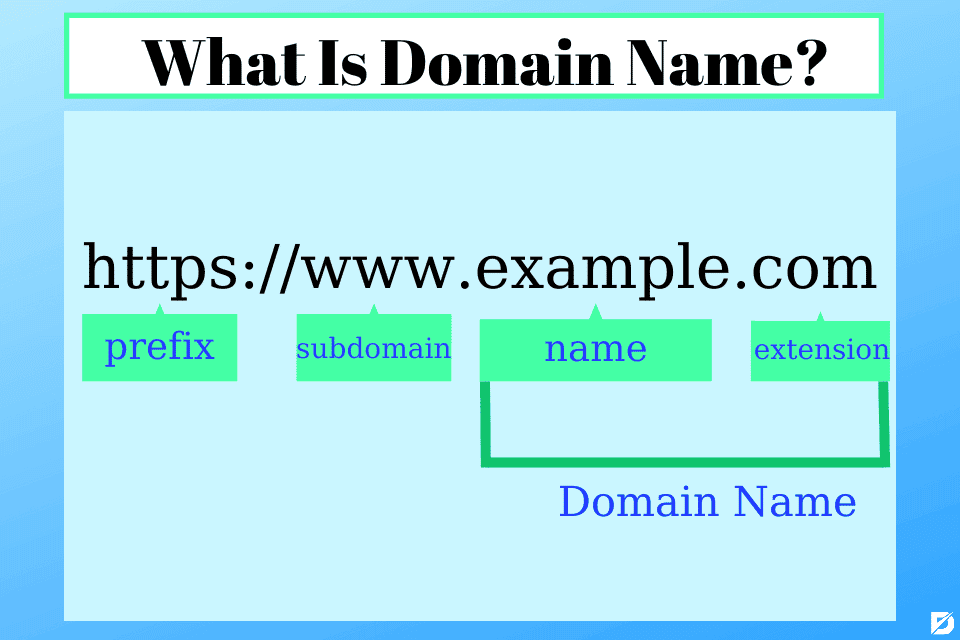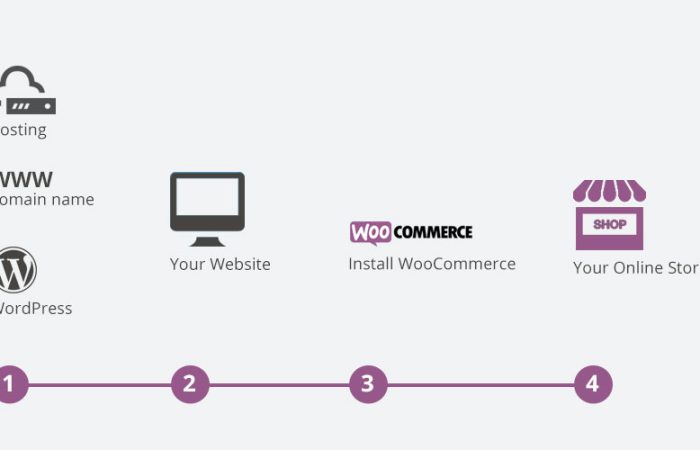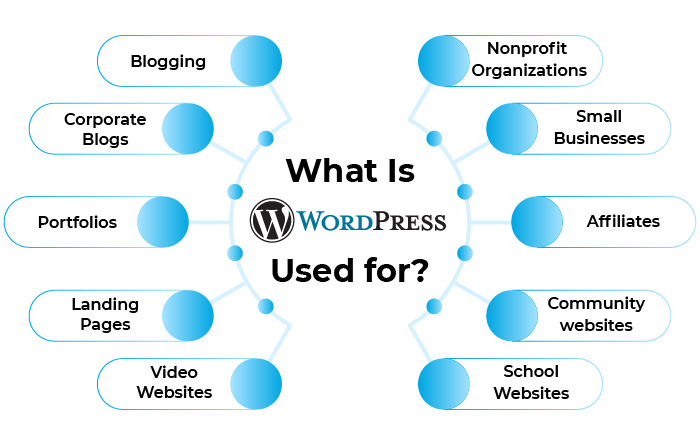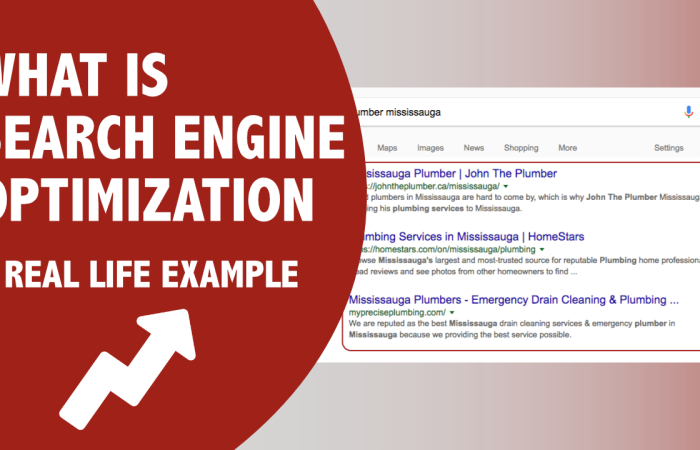If you've ever thought about selling products online, you've likely come across the term WooCommerce…
What is a Domain Name?
In today’s digital age, having an online presence is crucial for businesses, organizations, and individuals. One of the most fundamental aspects of creating a presence on the internet is securing a domain name. But, what is a domain name? This article will explore the concept of domain names in detail, explaining what they are, why they are important, how to choose one, and the steps involved in registering and managing a domain name.
Understanding Domain Names
To answer the question, “What is a domain name?” let’s start with the basics. A domain name is essentially the address of your website that people type into their web browser to access your site. It is a human-readable representation of an IP (Internet Protocol) address, which is a unique string of numbers that identifies a specific computer or server on the internet.
For example, the domain name for Google is “google.com.” When you type “google.com” into your browser, it is translated into an IP address, allowing your browser to connect to Google’s servers and display the website. This system makes it easier for people to remember and access websites without needing to memorize complex numerical addresses.
The Structure of a Domain Name
A domain name is composed of several parts, each serving a specific function. Understanding the structure of a domain name can help clarify “what is a domain name” and how it works.
- Top-Level Domain (TLD): The TLD is the part of the domain name that appears after the final dot. Common TLDs include .com, .org, .net, and .edu, but there are also country-specific TLDs such as .uk (United Kingdom), .ca (Canada), and .au (Australia). The TLD helps categorize the domain and indicates the type of organization or geographical location.
- Second-Level Domain (SLD): The SLD is the part of the domain name that appears directly to the left of the TLD. In “google.com,” “google” is the SLD. The SLD is often the most recognizable part of the domain name and represents the brand, organization, or purpose of the website.
- Subdomain: A subdomain is an optional part of the domain name that appears before the SLD. It helps organize and navigate different sections of a website. For example, in “mail.google.com,” “mail” is the subdomain, indicating that this part of the site is dedicated to email services.
- Root Domain: The combination of the SLD and TLD (e.g., google.com) forms the root domain, which is the main address of a website.
The Importance of a Domain Name
Now that we have a basic understanding of what a domain name is, let’s explore why it is important. A domain name is more than just an address; it is a critical component of your online identity and presence. Here are some key reasons why domain names matter:
- Brand Identity and Recognition: A domain name is often the first impression potential customers or visitors have of your website. A memorable and relevant domain name can enhance your brand identity, make your website easier to find, and help build credibility and trust with your audience.
- SEO Benefits: Search engines like Google consider domain names when ranking websites. A relevant domain name that includes keywords related to your business or industry can improve your website’s search engine optimization (SEO) and increase visibility in search results.
- Professionalism: A custom domain name gives your website a professional appearance and shows that you are serious about your online presence. It distinguishes you from competitors who may be using free hosting services with generic subdomains.
- Control and Ownership: By registering a domain name, you gain control over your online identity. You can create custom email addresses, set up multiple subdomains, and redirect traffic as needed. This level of control is not possible with free hosting services or social media platforms.
- Access to a Global Audience: A domain name allows you to reach a global audience. Whether you are a business looking to expand internationally or a blogger sharing your passion with the world, a domain name gives you the potential to connect with people from all corners of the globe.
How to Choose the Right Domain Name
Choosing the right domain name is a crucial decision that can impact your website’s success. Here are some tips to help you select a domain name that aligns with your goals and resonates with your audience:
- Keep It Short and Simple: A short and simple domain name is easier to remember and type, reducing the chances of errors when visitors try to access your site. Aim for a domain name that is concise, clear, and easy to spell.
- Make It Relevant: Your domain name should reflect your brand, business, or the purpose of your website. Consider including keywords related to your industry or niche to make it more relevant and improve SEO.
- Choose the Right TLD: While .com is the most popular and widely recognized TLD, there are many other options available, including .net, .org, .info, and more. Choose a TLD that aligns with your website’s purpose and target audience. For example, a nonprofit organization may prefer .org, while a tech company may opt for .io.
- Avoid Numbers and Hyphens: Numbers and hyphens can make domain names confusing and harder to remember. Stick to letters and avoid using special characters to keep your domain name simple and user-friendly.
- Check for Trademarks: Before finalizing your domain name, check for any existing trademarks or copyrights that may be associated with it. Using a trademarked name could lead to legal issues and negatively impact your brand.
- Think Long-Term: Consider the long-term goals of your website when choosing a domain name. Avoid names that may limit your growth or become irrelevant as your business evolves. A flexible and timeless domain name can accommodate future changes and expansions.
How to Register a Domain Name
Once you’ve decided on the perfect domain name, the next step is to register it. Here’s a step-by-step guide to help you navigate the registration process:
- Choose a Domain Registrar: A domain registrar is a company that manages the registration of domain names. Some popular registrars include GoDaddy, Namecheap, Bluehost, and Google Domains. Compare the prices, features, and customer support of different registrars to find one that suits your needs.
- Check Domain Name Availability: Use the search tool provided by your chosen registrar to check if your desired domain name is available. If the name is already taken, the registrar may suggest alternative options or variations.
- Select Your Registration Period: Domain names are typically registered for a period of one year, but you can choose to register your domain for multiple years. Some registrars offer discounts for longer registration periods, so consider your budget and plans when making this decision.
- Enter Your Contact Information: When registering a domain name, you must provide your contact information, including your name, address, phone number, and email address. This information is required by the Internet Corporation for Assigned Names and Numbers (ICANN) and will be publicly visible in the WHOIS database unless you opt for domain privacy protection.
- Add Domain Privacy Protection: Domain privacy protection is an optional service that conceals your contact information in the WHOIS database, reducing the risk of spam and identity theft. While it comes with an additional cost, many website owners find it a worthwhile investment for added security and privacy.
- Complete the Registration and Payment: Review your order, select any additional services (such as email hosting or website building tools), and complete the registration process by providing payment information. Once your payment is processed, you will receive a confirmation email, and your domain name will be officially registered.
Managing Your Domain Name
After registering your domain name, it’s important to manage it effectively to ensure the smooth operation of your website. Here are some key aspects of domain management:
- Keep Your Contact Information Up-to-Date: It’s crucial to keep your contact information current in your registrar account. ICANN requires accurate information, and failure to provide it could result in the loss of your domain.
- Renew Your Domain Name on Time: Domain names must be renewed periodically to maintain ownership. Set reminders to renew your domain before it expires to avoid losing it. Most registrars offer auto-renewal options, allowing you to renew your domain automatically.
- Enable Domain Locking: Domain locking is a security feature that prevents unauthorized transfers of your domain. By enabling domain locking, you can protect your domain from being transferred without your consent.
- Monitor Domain Expiration Dates: Keep track of your domain’s expiration date to avoid losing it. If your domain expires and is not renewed within a specific grace period, it may become available for registration by others or be auctioned off by the registrar.
- Consider Transferring Your Domain: If you are not satisfied with your current registrar’s services, you can transfer your domain to a different registrar. The transfer process involves unlocking your domain, obtaining an authorization code, and initiating the transfer with the new registrar. Note that domain transfers may have specific requirements and fees, so check with both registrars for details.
- Set Up Domain-Based Email Addresses: A domain-based email address (e.g., info@yourdomain.com) can enhance your professional image and improve communication with customers and clients. Many registrars offer email hosting services that allow you to create and manage domain-based email addresses.
Common Misconceptions About Domain Names
As we continue to explore the question, “What is a domain name?” it’s important to address some common misconceptions that people may have about domain names:
- A Domain Name Is Not a Website: A domain name is the address used to access a website, but it is not the website itself. A website is a collection of files, images, and code stored on a server, while a domain name is the addressthat directs users to that server. To have a functioning website, you need both a domain name and web hosting.
- Domain Names Are Not Forever: Registering a domain name does not mean you own it forever. Domain names are leased on a yearly basis, and you must renew your registration to maintain ownership. If you forget to renew, you risk losing the domain to someone else.
- Not All Domain Extensions Are the Same: While .com is the most popular domain extension, there are many other options, such as .org, .net, .info, and even more specific ones like .shop or .blog. The extension you choose can impact how your website is perceived and who it attracts.
- A Premium Domain Name Doesn’t Guarantee Success: While a memorable and keyword-rich domain name can help with branding and SEO, it does not guarantee website traffic or business success. Content quality, user experience, marketing efforts, and other factors play a crucial role in your online presence.
The Future of Domain Names
As the internet continues to evolve, the role and importance of domain names are also changing. Here are some trends to watch for in the future of domain names:
- Rise of New TLDs: The introduction of new top-level domains (TLDs) has expanded the range of available domain names, allowing for more creativity and specificity. Domains like .tech, .online, .app, and .design are becoming increasingly popular as businesses and individuals seek unique and descriptive domain names.
- Increased Emphasis on Brand Protection: With the growth of online businesses, protecting brand identity has become more critical. Companies are registering multiple domain names, including misspellings and variations, to prevent competitors from acquiring similar domains.
- Blockchain Domains: Blockchain technology is starting to influence the domain industry, with blockchain-based domains like .crypto and .eth emerging. These domains offer decentralized domain registration and management, providing more security and resistance to censorship.
- Greater Focus on Local Domains: As businesses aim to connect with local markets, country-code TLDs (ccTLDs) like .ca, .uk, and .de are gaining traction. These domains signal a regional presence and can improve local search rankings.
- SEO and Domain Relevance: Search engines continue to refine their algorithms, and the relevance of domain names to SEO is constantly evolving. While exact-match domains (EMDs) were once highly valued, current trends emphasize the importance of user experience, content quality, and brand trustworthiness over domain keywords.
Conclusion
In conclusion, “What is a domain name?” is a question that goes beyond a simple definition. A domain name is a vital component of your digital identity, serving as the address for your online presence and playing a crucial role in branding, SEO, and user accessibility. Understanding the structure, importance, and management of domain names can help you make informed decisions that enhance your website’s success.
Whether you’re starting a new business, launching a blog, or creating a personal portfolio, choosing the right domain name is a step that should not be taken lightly. With careful consideration and strategic planning, a domain name can become a powerful tool that helps you build a successful and lasting online presence. So, the next time someone asks, “What is a domain name?” you’ll be well-equipped to explain not just what it is, but why it matters in today’s digital world.




